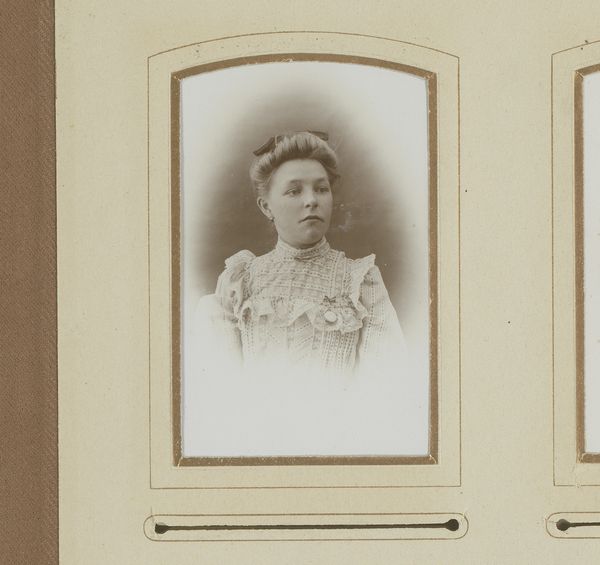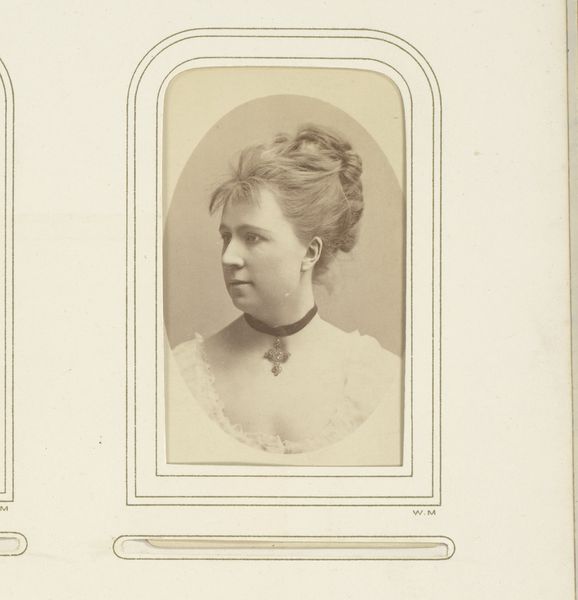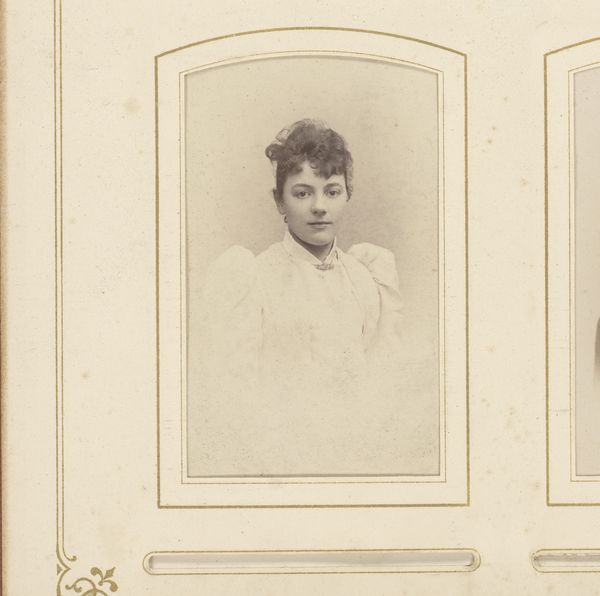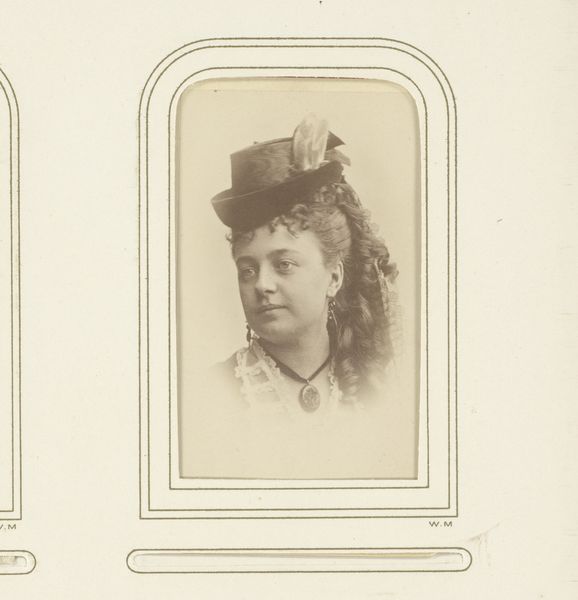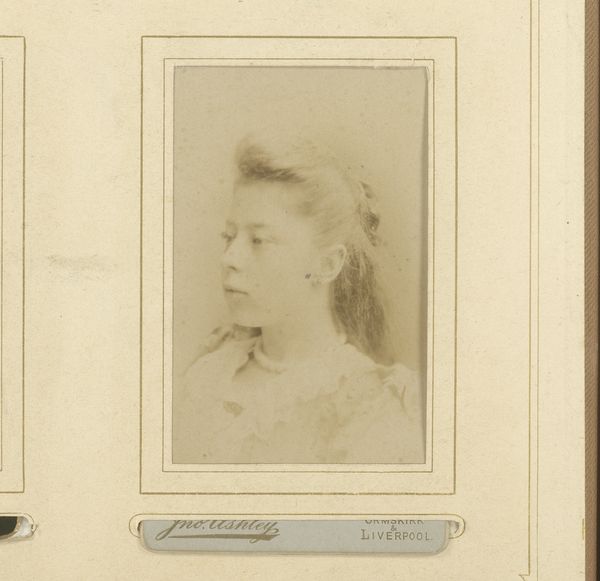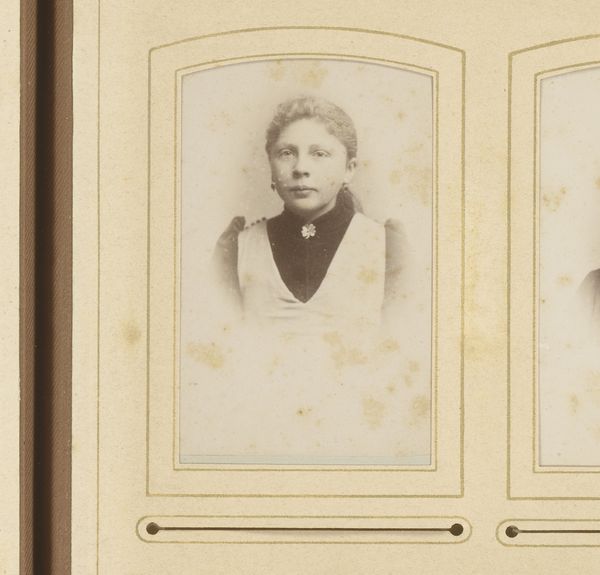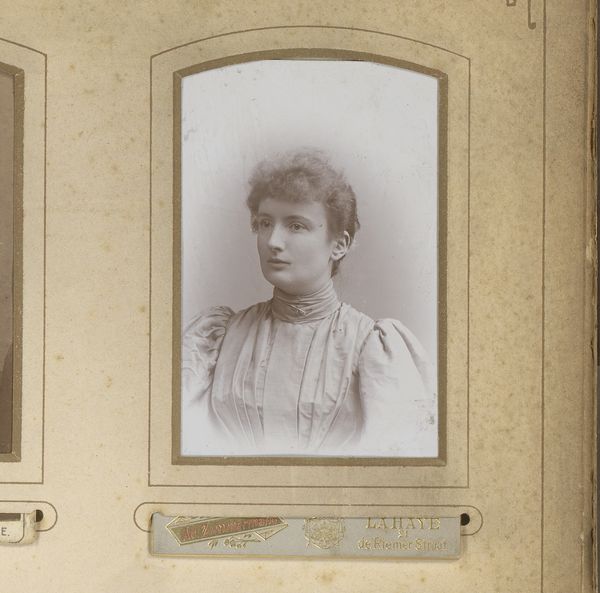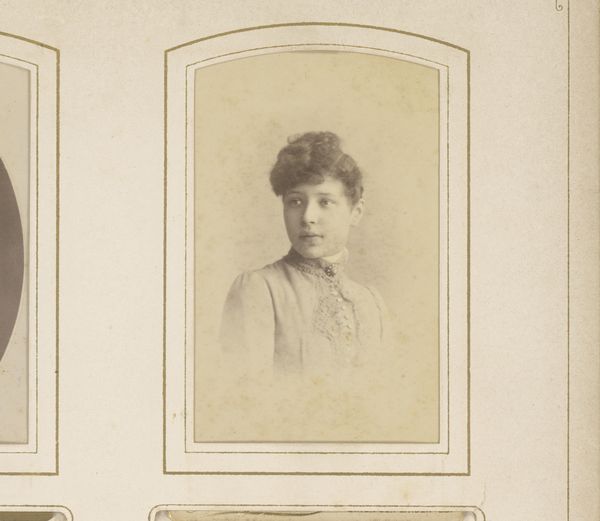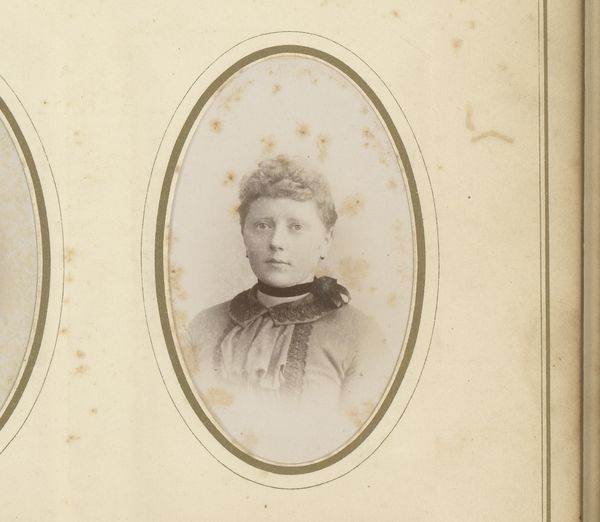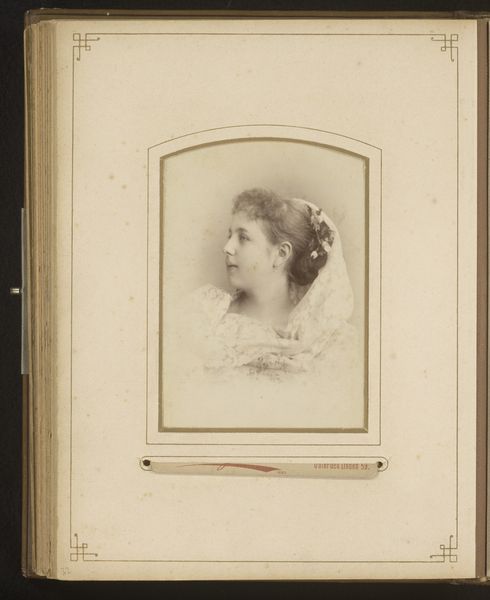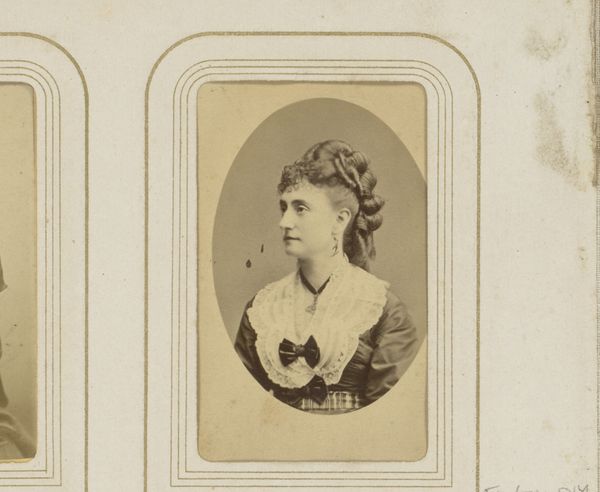
photography
#
portrait
#
charcoal drawing
#
photography
#
realism
Dimensions: height 87 mm, width 53 mm
Copyright: Rijks Museum: Open Domain
Curator: This work is a portrait of a girl by Cornelis Halbertsma, dating roughly between 1891 and 1901. It's presented in a photographic format. Editor: What a wistful, almost dreamy face. The soft focus and the girl's gentle gaze create a feeling of serene contemplation. It feels like stepping back in time. Curator: Precisely. Photography at the turn of the century involved different processes, impacting both the production and our experience of these images today. The material limitations meant longer exposure times. The social constraints dictated particular styles. The subtle imperfections give it its depth. Editor: It also speaks to the labour that went into creating a photographic image back then. You wouldn't just snap a picture, like we do now. The whole occasion felt weighty, somehow. Did Halbertsma likely use light at the core of this work? Curator: Most likely, yes. We see a fine example of portrait photography. It's essential to consider the evolving use of photography in documentation, social status, and representation during this era. Remember also the work for creating and distributing photographic materials. Editor: I'm fascinated by the almost painterly quality given by the choice of photography at the time. Curator: You are right to touch upon the materials because the texture plays a role in the artwork's feeling. The sepia tones further contribute to the portrait’s melancholic beauty. The frame itself serves as both context and limitation to our view, focusing it. Editor: The subdued palette feels almost timeless. It brings me such a deep sense of intimacy and wonder. The very stillness draws you to observe this woman beyond merely viewing her picture. Curator: Indeed, consider the production constraints: lighting and material availability influenced composition, tonality and availability of tools and photographic materials also shaped its aesthetic appeal. These elements offer a glimpse into the period's technological context. Editor: So, while photography serves as a mechanical means of representation, it appears like magic from my vantage point. You could say Halbertsma elevated the craft with a profound expressive form. Curator: In conclusion, it’s critical to recognise photography in context within its production means. The economic landscape determined the value of photographic images during this era. Editor: What a remarkable opportunity for observation through this work. Thank you.
Comments
No comments
Be the first to comment and join the conversation on the ultimate creative platform.
